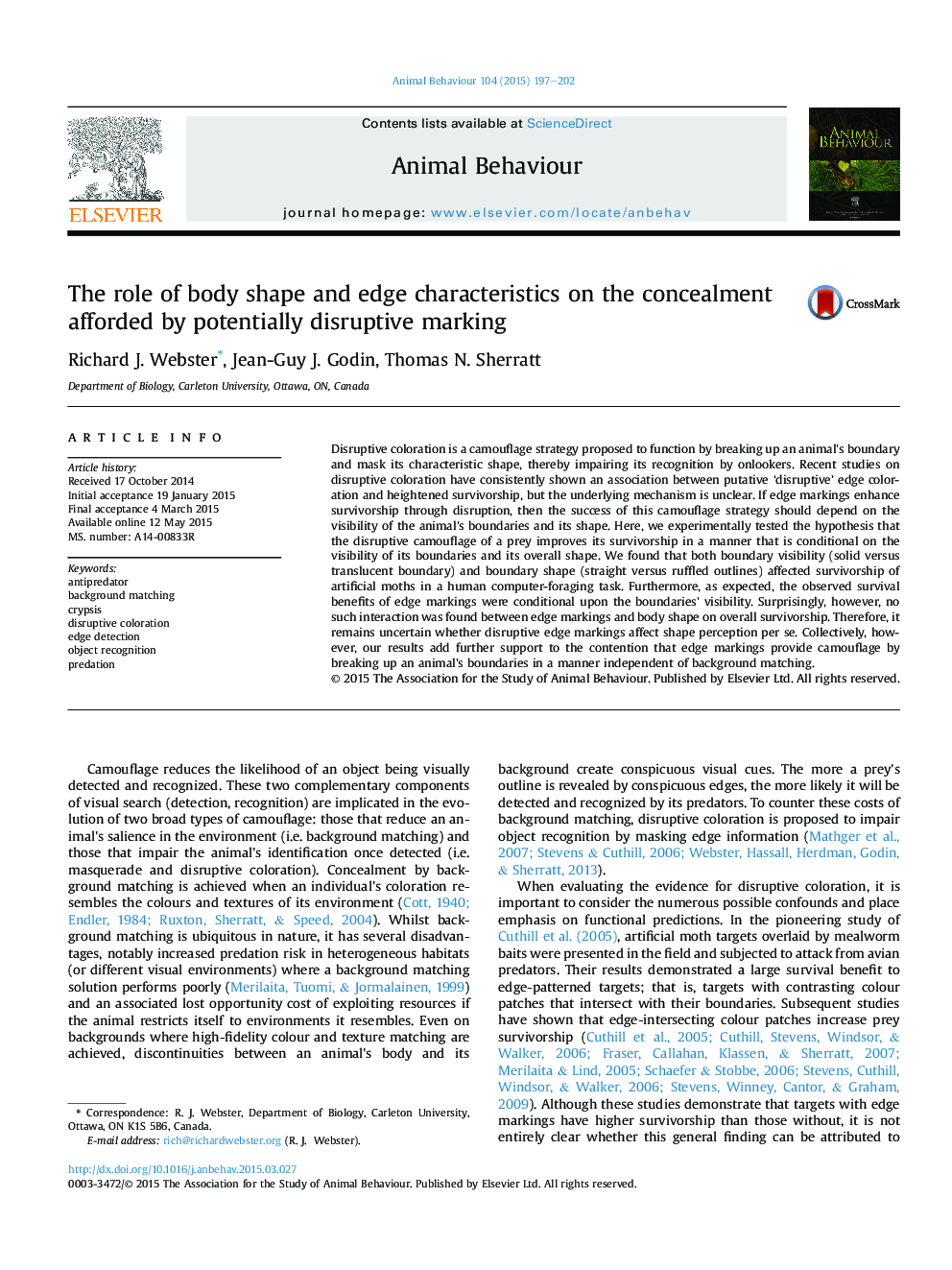| کد مقاله | کد نشریه | سال انتشار | مقاله انگلیسی | نسخه تمام متن |
|---|---|---|---|---|
| 2416306 | 1552224 | 2015 | 6 صفحه PDF | دانلود رایگان |
• Boundary and shape properties are important for predators to recognize their prey.
• We address the untested hypothesis that disruptive coloration distorts outlines.
• We show that edge markings increase survivorship, dependent on boundary visibility.
• Surprisingly, concealment provided by edge markings is not dependent on shape.
• We argue that edge markings function as disruptive coloration, independent of crypsis.
Disruptive coloration is a camouflage strategy proposed to function by breaking up an animal's boundary and mask its characteristic shape, thereby impairing its recognition by onlookers. Recent studies on disruptive coloration have consistently shown an association between putative ‘disruptive’ edge coloration and heightened survivorship, but the underlying mechanism is unclear. If edge markings enhance survivorship through disruption, then the success of this camouflage strategy should depend on the visibility of the animal's boundaries and its shape. Here, we experimentally tested the hypothesis that the disruptive camouflage of a prey improves its survivorship in a manner that is conditional on the visibility of its boundaries and its overall shape. We found that both boundary visibility (solid versus translucent boundary) and boundary shape (straight versus ruffled outlines) affected survivorship of artificial moths in a human computer-foraging task. Furthermore, as expected, the observed survival benefits of edge markings were conditional upon the boundaries' visibility. Surprisingly, however, no such interaction was found between edge markings and body shape on overall survivorship. Therefore, it remains uncertain whether disruptive edge markings affect shape perception per se. Collectively, however, our results add further support to the contention that edge markings provide camouflage by breaking up an animal's boundaries in a manner independent of background matching.
Journal: Animal Behaviour - Volume 104, June 2015, Pages 197–202
